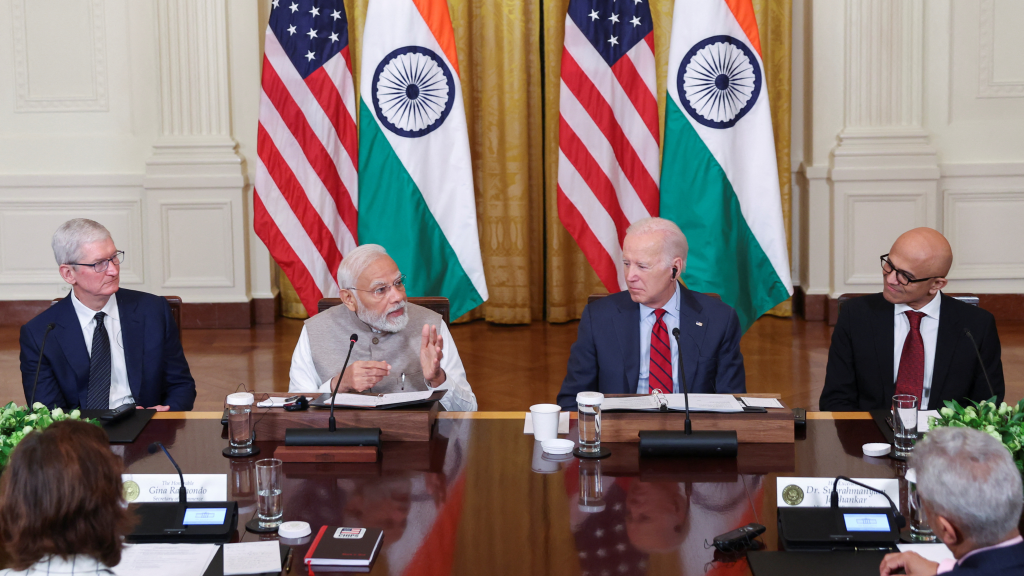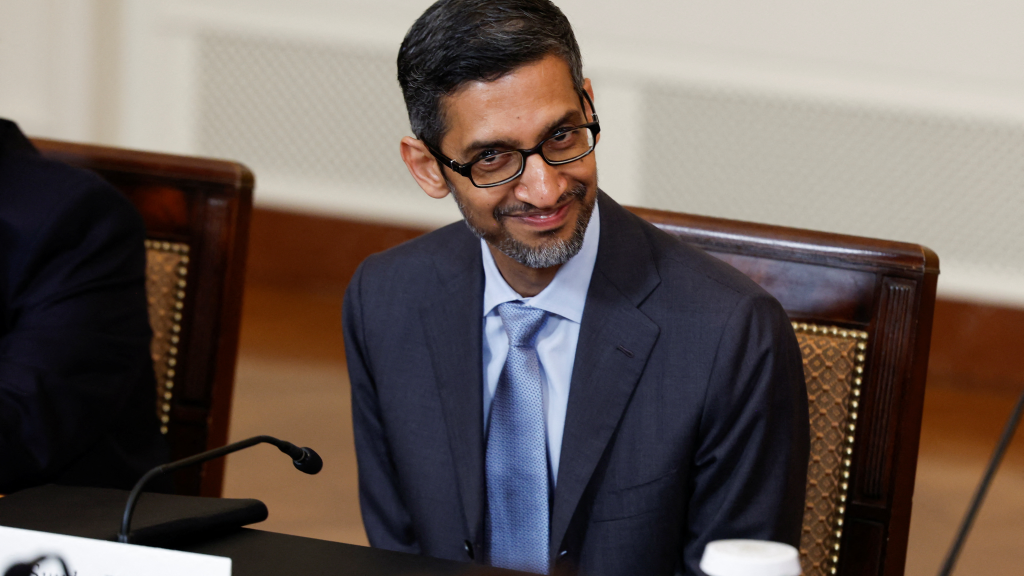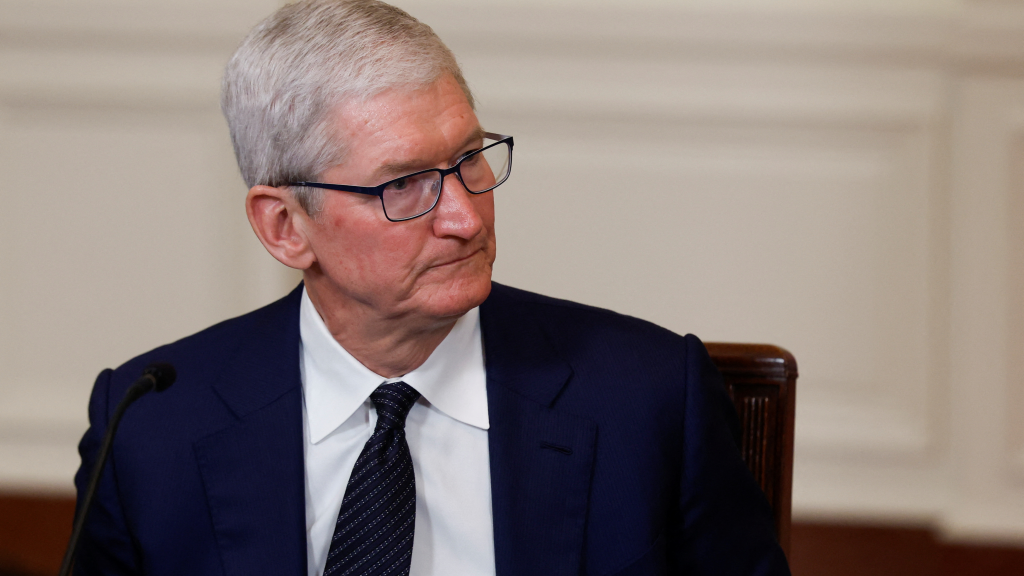 June 23, 2023. REUTERS/Evelyn Hockstein
June 23, 2023. REUTERS/Evelyn Hockstein In a milestone joint statement, the US and India have reaffirmed their strong Indo-US strategic partnership, following Indian Prime Minister Narendra Modi’s first US state visit.
- Security, trade, climate change, and technology were among the key issues covered in the joint statement, reflecting the commitment of both countries to work together.
- Prime Minister Modi’s meetings with Big Tech executives indicate India’s increasing importance as an investment destination.
- Challenges such as labor laws and regulatory uncertainty still pose obstacles to Indo-American business.
In a joint statement on June 22nd, the United States and India reaffirmed the strong and growing Indo-US strategic partnership. The statement is a milestone in Indian Prime Minister (PM) Narendra Modi’s first US state visit which also included a meeting with Big Tech executives, covering a wide range of issues, including security, trade, climate change, and technology.
The US and India’s commitment ensures a free and open Indo-Pacific region, focusing on security cooperation in counterterrorism, maritime security, and nuclear nonproliferation. As for trade, they are “committed to expanding our economic relationship” by promoting trade and investment and reducing trade barriers. both countries have agreed to cooperate on clean energy and reducing greenhouse gas emissions to address climate change. In the realm of technology, this Indo-US strategic partnership outlines a commitment to cybersecurity cooperation and ensuring technology is used responsibly.
This recent update to Indo-American relations has resulted in numerous tech and defense deals between the two. First, the US is to sell India around 30 General Atomics MQ-9B High Altitude Long Endurance (HALE) Unmanned Aerial vehicles (UAV), which the Indian Navy will use for surveillance and reconnaissance missions. Second, the US and India will jointly produce F414 jet engines in India strengthening India’s aerospace industry and reducing its dependence on foreign suppliers. Third, the two also signed a Master Ship Repair Agreement (MSRA) that will allow the US Navy to repair its ships in Indian shipyards, improving the interoperability of the US and Indian navies and boosting the Indian shipbuilding industry. Finally, they have decided to launch the India-US Defense Acceleration Ecosystem (INDUS-X), which is a public-private partnership to advance cooperation between both countries’ military-production industries.
During his speech to the joint session of the US Congress, PM Modi remarked how far the Indo-American relations have come, saying “When India and the US work together on semiconductors and critical minerals, it helps the world in making supply chains more diverse, resilient and reliable. We were strangers in defense cooperation at the turn of the century, but now the United States has become one of our most important defense partners.”
The future of the Indo-US strategic partnership is looking bright, as the US pursues “friend-shoring,” a strategy in which it diversifies away from China and taps into the potential of other countries in the region.
However, the slew of deals between the US and India may not lead to an official allyship. According to Raymond Vickery, senior associate in US-India policy studies at the Center for Strategic and International Studies, “The Biden administration has placed a huge bet on the strategic and economic relationship. And that is not contingent upon India supporting the United States down the line. It’s not an ally relationship, but it is one of equal partners and equal strategic interest.”

During his visit, Prime Minister Modi also met with a number of Big Tech executives at the White House. The list of industry giants included Tesla’s Elon Musk, Microsoft’s Satya Nadella, Alphabet’s Sundar Pichai, IBM’s Arvind Krishna, Amazon’s Jeff Bezos, and Apple’s Tim Cook. The discussion focused on the opportunities and challenges of investing in India, driven by a desire to move away from China’s tech sector.

Talking to FOX Business, Balbinder Singh Gill, an assistant professor of finance at Stevens Institute of Technology, said: “What is happening is investors do not want to invest in China and its tech sector and the easy way to do investments is going to India, do investment in India.”
During his one-on-one meeting with Modi, Musk hinted at following Apple’s footsteps in India. Earlier this year, Apple opened its first Apple Store locations in Mumbai and Delhi after having been manufacturing iPhones there since 2017. “I am confident that Tesla will be in India and will do so as soon as humanly possible” Musk said according to Reuters.

As for the rest of the CEOs, they are happy with the direction this partnership is taking with Cook telling CNBC that India represents a “huge opportunity.” An opportunity that Amazon has decided to seize, stating on June 23rd its intent to invest in India $26 billion by 2030. As for Micron and Applied Materials and other significant semiconductor companies, they announced plans to significantly invest in India. In fact, Micron aims to open a facility in Gujarat as the broader chip industry looks for ways to diversify its supply chain.
However, highly skilled labor and outdated labor laws stand in the way of Indo-American business. Kenneth Juster, former US Ambassador to India, put it: “US companies in India have had difficulties over time with regulatory uncertainty as well as challenges in relocating or terminating employees.”
The recent joint statement and visit by the Indian Prime Minister Narendra Modi to the United States have solidified the strong Indo-US strategic partnership between the two countries. These relations add an interesting dynamic to the somewhat fragile international situation involving China, Russia, the U.S., and the rest of the world.
Inside Telecom provides you with an extensive list of content covering all aspects of the tech industry. Keep an eye on our Tech sections to stay informed and up-to-date with our daily articles.